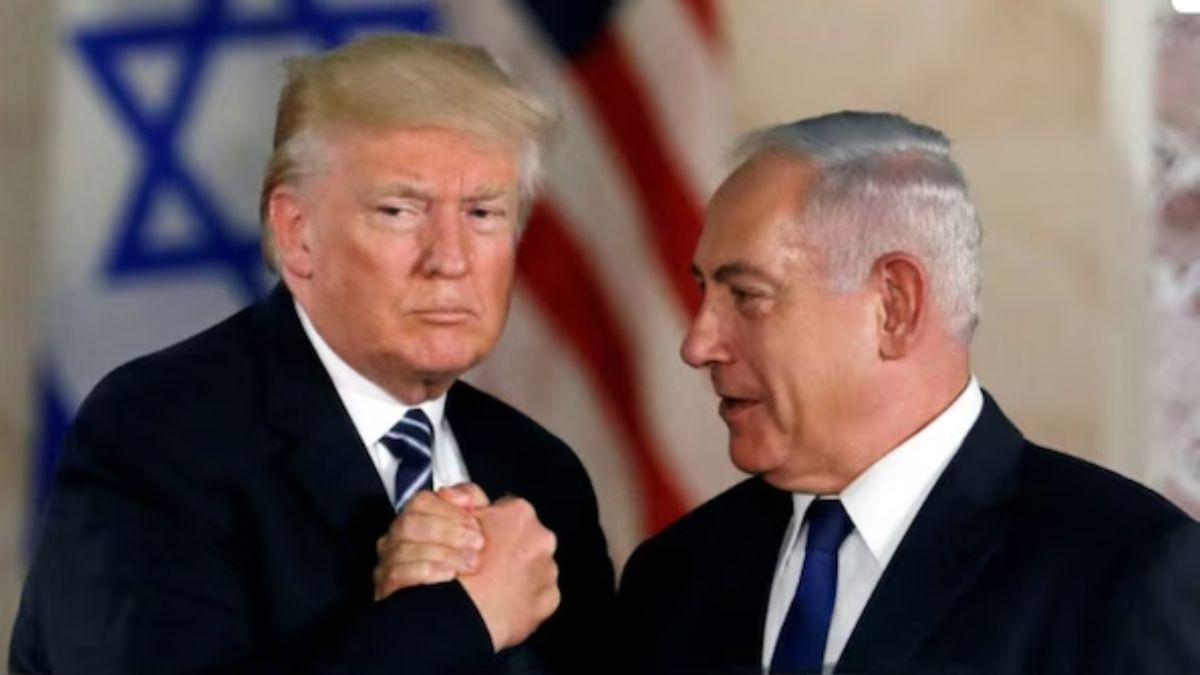On Tuesday (June 17), US President Donald Trump said he wanted a “real end” to the ongoing conflict between Israel and Iran.
But how does he hope to achieve his objective? Definitely not by reaching a ceasefire with the theocratic state.
Speaking to reporters aboard Air Force One while on his way back home from the G7 Summit, he said he was seeking something “better than a ceasefire” — a “complete give-up” by Iran.
Steps taken by the US president over the past 48 hours signal a clear shift in US policy: Washington is seriously deliberating joining the conflict directly, thus risking widening the crisis in the region which can even engulf the entire word.
Direct warning to the Supreme Leader
As far as issuing verbal threats is concerned, Trump has already gone full throttle.
On Tuesday, he warned the Shi’ite nation against targeting US bases in the region, saying, “We’ll come down so hard, it’d be gloves off.”
Going a step forward, he then dropped a threat on the supreme leader himself.
Trump said they know “exactly” where the Iranian Supreme Leader Ayatollah Ali Khamenei is “hiding”, adding that “at least for now, they are not going to kill him.”
“We know exactly where the so-called “Supreme Leader” is hiding. He is an easy target, but is safe there - We are not going to take him out (kill!), at least not for now. But we don’t want missiles shot at civilians, or American soldiers. Our patience is wearing thin. Thank you for your attention to this matter,” Trump wrote in his Truth Social post.
Impact Shorts
More ShortsUS makes military moves
Meanwhile, it has been reported that the US is deploying more fighter aircraft to West Asia and extending the deployment of other warplanes, bolstering American military forces in the region. One of the officials said the deployments include F-16, F-22 and F-35 fighter aircraft.
Two of the officials stressed the defensive nature of the deployment of fighter aircraft, which have been used to shoot down drones and projectiles.
On Monday, Reuters reported the movement of a large number of tanker aircraft to Europe as well as the deployment of an aircraft carrier to the region.
However, US Defense Secretary Pete Hegseth described the deployments as defensive in nature.
The United States already has a sizeable force in the Middle East, with nearly 40,000 troops in the region, including air defense systems, fighter aircraft and warships that can detect and shoot down enemy missiles, reported Reuters.
International ramifications
In the wake of the conflict, there are reports that Turkish President Recep Tayyip Erdogan has ordered an expansion in the production of medium- and long-range missiles.
“We will elevate our level of deterrence so high that not only will they not attack us — they won’t even dare to think about it,” Erdogan said, citing increasing threats in the Middle East.
China’s Xi Jinping said he was “deeply worried” about Israel’s military operation against Iran. While speaking at a conference with five Central Asian nations in the Kazakh capital of Astana, Xi said China opposes any actions that infringe upon the sovereignty, security, and territorial integrity of other countries.
“All parties should work to de-escalate the conflict as soon as possible and prevent the situation from worsening further,” Xi said, in comments quoted by Chinese state broadcaster CCTV.
IDF strikes continue
The Israeli Defense Forces (IDF) on Wednesday (June 18) said its fighter jets targeted a key uranium enrichment facility and multiple missile manufacturing sites in Tehran in overnight strikes.
The IDF said the strikes were meant to disrupt Iran’s “nuclear weapons programme”.
“As part of the broader effort to damage Iran’s nuclear weapons program, a centrifuge production facility in Tehran was targeted. The facility was designed to help the regime expand the scope and speed of its uranium enrichment for nuclear weapons development,” the IDF Spokesperson’s Unit said Wednesday.
“It’s important to emphasise that civilian nuclear programs do not require enrichment at such levels,” said the statement.
Earlier on Tuesday evening, there were reports of loud explosions in Tehran as anti-aircraft rockets lit up the skies. As per reports, about 50 Israeli fighter jets carried out the operation.
Meanwhile, residents earlier began fleeing Tehran in large numbers after Israel asked people living in the capital city to evacuate sites located in proximity to military and alleged nuclear sites.
Israeli Defence Minister Israel Katz meanwhile said “a tornado storm is passing through Tehran”.
Key question
Significant uncertainties are now hovering regarding the true intent behind Trump’s “real end” strategy—whether it represents a calculated push for diplomatic negotiations, a stern threat of deploying overwhelming military force, or a deliberate preparation for the United States to enter a broader regional conflict.
As tensions escalate, regional powers and the international community are on high alert, anxiously anticipating and preparing for Trump’s next decisive move.


)

)
)
)
)
)
)
)
)



